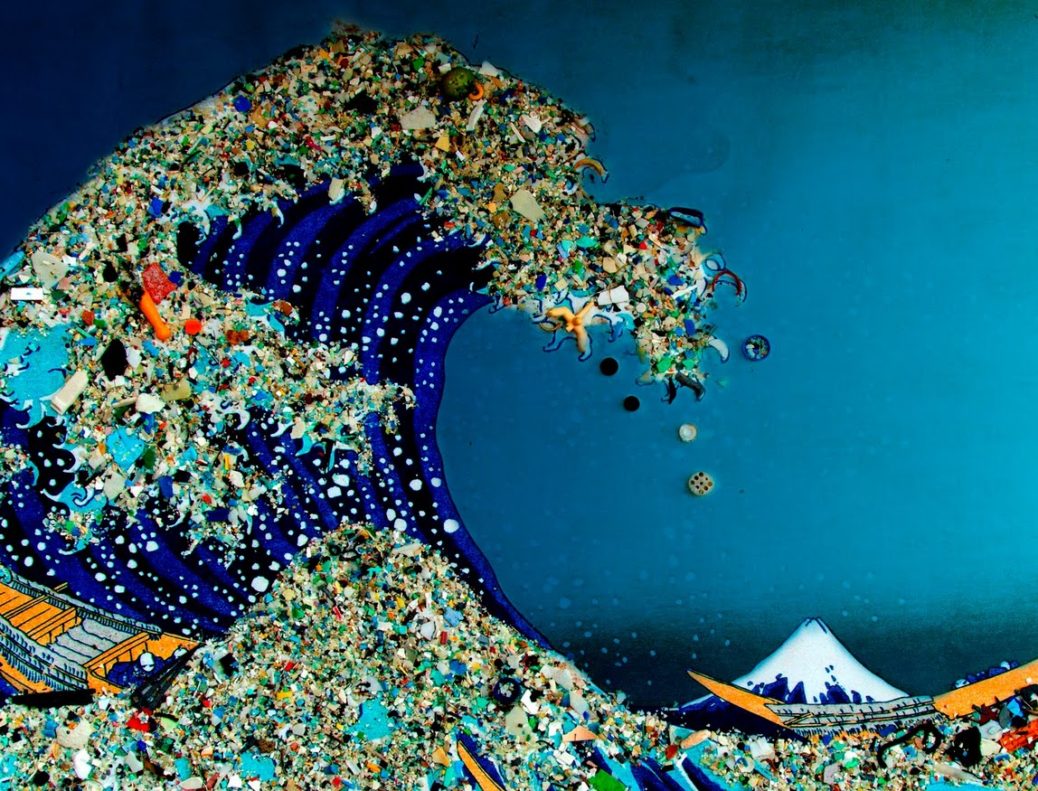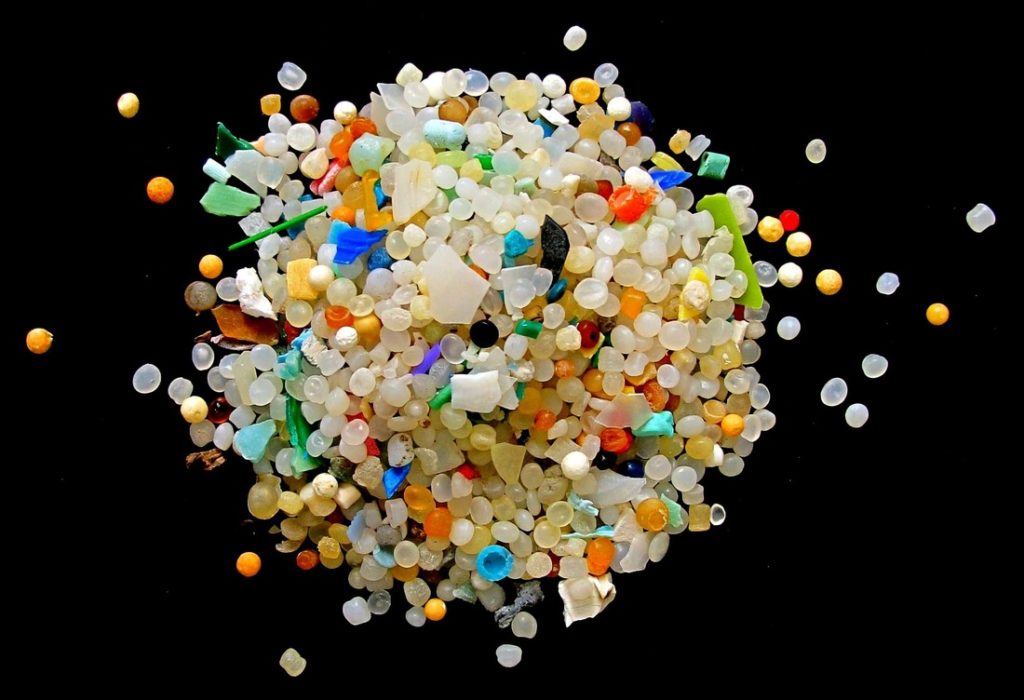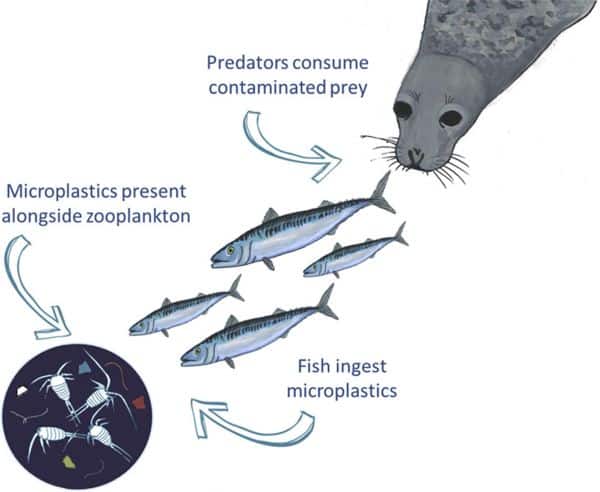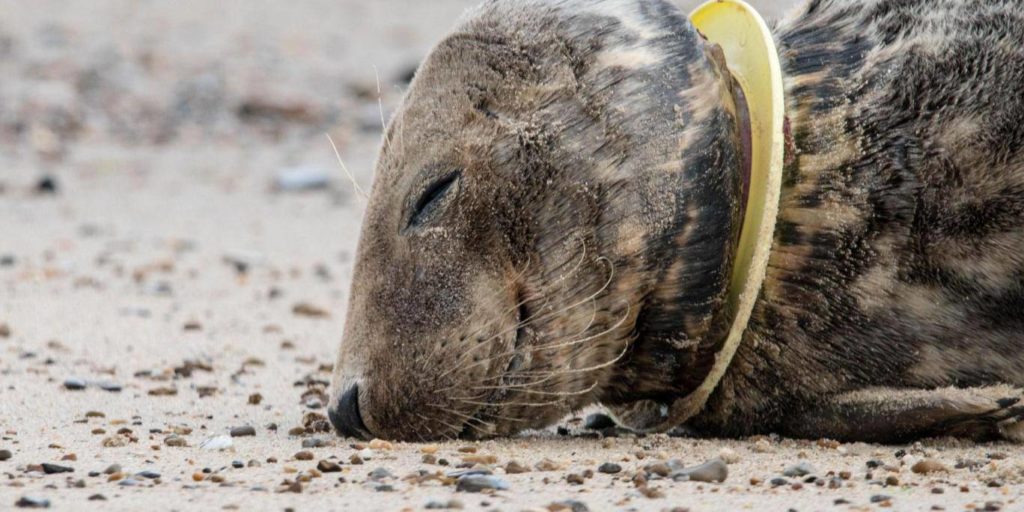Microplastics Moving Up the Food Chain Risking Ocean’s Top Predators
Microplastics are highly bioavailable to marine organisms, either through direct ingestion, or indirectly by trophic transfer from contaminated prey. Now, for the first time, scientists have shown that microplastics within fish can transfer to marine predators at the top of the food chain, further risking the exposure of man-made chemicals to animals and – in the long run – us.
It’s no shocker of how little regard we have towards our fellow species. But this is just despicable; being such highly intellectual lifeforms, how to actually behave the part is clearly lost on us.
Over 400 million tons of plastic are produced globally each year. It is estimated that one third of all plastic waste ends up in soils or freshwaters.
Microplastics are synthetic and persistent particles that originate from a variety of sources, which include the fragmentation of larger macro-plastics (e.g. fishing gear, packaging) by UV photo-degradation, wave action and physical abrasion; shipping spills of pre-production pellets (nurdles) and polystyrene beads; the discharge of waste water containing microbeads used in cosmetics and microfibers released during the washing of textiles; and run-off from land containing road marking paint and vehicle tyre fragments
. Their small size means that microplastics are bioavailable to ingestion by a variety of taxa including zooplankton, marine invertebrates, fish, seabirds, and marine mammals.And we all know the food cycle- little fish eats plankton, bigger fish eats the little fish, then a seal eats the bigger fish, thus consuming the energy from all three smaller animals. Now, if this little fish was to seek and consume or even accidentally ingest an indigestible piece of plastic, it naturally ends up in the belly of a predator like the seal.
This process, known as trophic transfer, has for the first time, been demonstrated by researchers from Plymouth Marine Laboratory (PML), University of Exeter and the Cornish Seal Sanctuary.
“Our findings suggest that trophic transfer represents an indirect, yet potentially major, pathway of microplastic ingestion for any species whose feeding ecology involves the consumption of whole prey,” the authors write in the study.
Researchers analysed scat (faeces) from captive grey seals (Halichoerus grypus) and the digestive tracts of the wild-caught Atlantic mackerel (Scomber scombrus) the seals were fed upon. One third of the mackerel and half of the scat samples contained microplastics, a finding that demonstrates a process known as trophic transfer, whereby prey containing microplastics are consumed by predators and the synthetic particles move up the food web as a result. This process has previously been observed in animals lower down the food chain, such as mussels and crabs, but this study is the first to provide evidence of it occurring in marine mammals.
Lead author Sarah Nelms of PML’s Microplastics Research Group commented: “Our finding that microplastics can be passed from fish to marine top predators is something we’ve long thought was the case but, until now, lacked the evidence to back our theory up. We have shown that trophic transfer is an indirect, yet potentially major, route of microplastic ingestion for these predators. By examining scat from captive animals and the digestive tracts of fish they were fed upon, we could eliminate the possibility that the seals were eating plastic directly and be sure that any microplastics we found in their scat came via the fish”
Dr Pennie Lindeque, lead of PML’s microplastics research, added: “Our study demonstrates how microplastics can be transferred from prey to predator and therefore passed up through the food chain. More work is needed to understand the extent to which microplastics are ingested by wild animals and what impacts they may have upon the animals and ecosystems.”
The new study highlights the importance of reliable, scientifically based data on degradation behaviour and the effects of microplastics. This data is necessary to be able to respond effectively to contamination by microplastics and the risk they pose to terrestrial ecosystems – where, after all, most plastic waste that enters the environment accumulates.

































